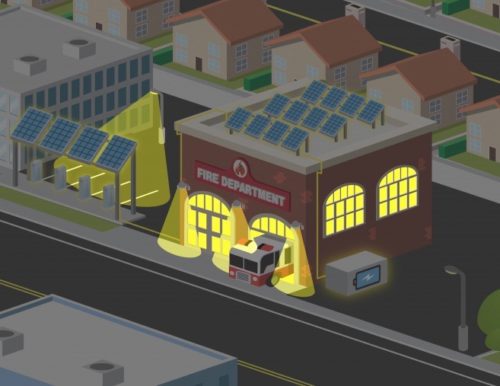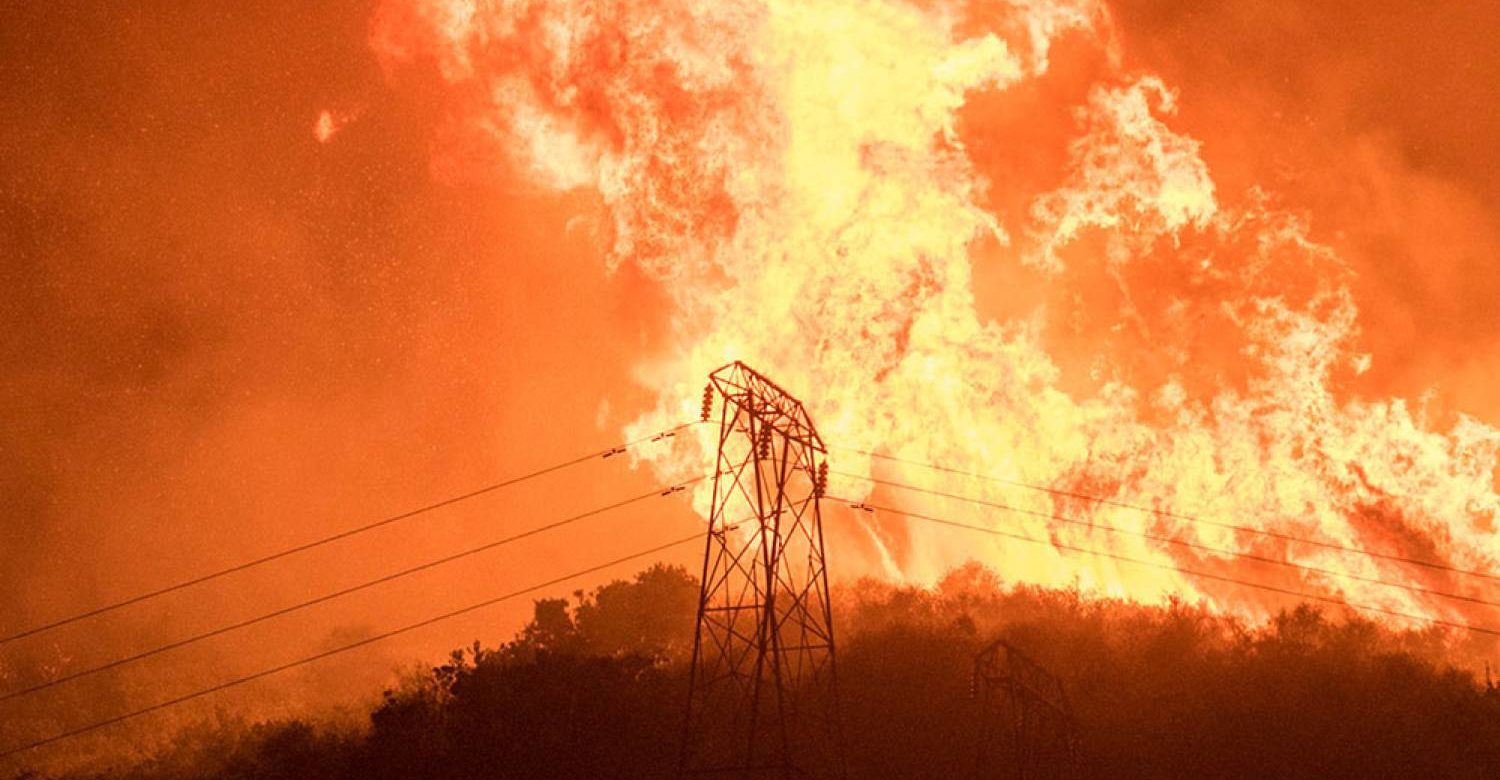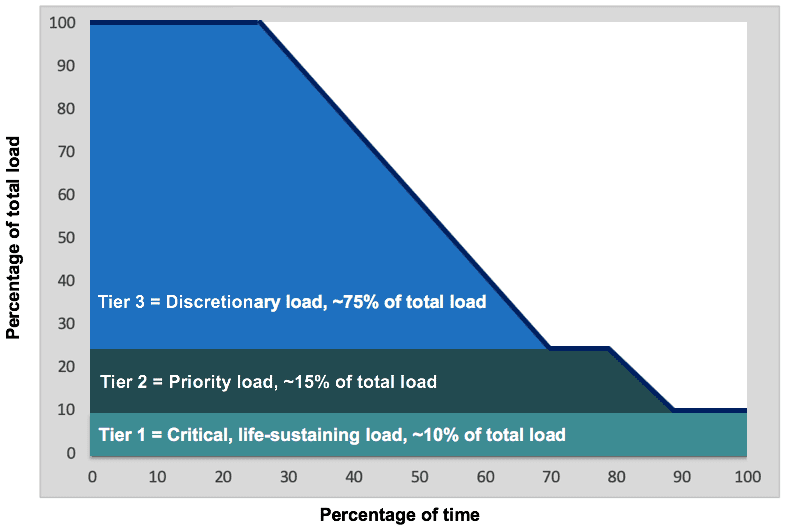
Community Microgrids in the spotlight
Wildfires and power outages are bringing unprecedented attention to these resilience solutions.
This is the moment for microgrids.As the decade comes to a close, record wildfires in California and other disasters across the country, combined with the new normal of Public Safety Power Shutoffs (PSPS), have catapulted microgrids into the spotlight. This is the moment the Clean Coalition has evolved for as we continue our groundbreaking work on Community Microgrids– a new way of designing and operating the electric grid.
This year, our work was covered extensively, including in mainstream publications like Mother Earth News, Bisnow, and The Washington Post. Microgrids have become a topic for the general public, not just those in the energy industry.
Making the “new normal” less normal

With some of the most devastating wildfires in California history being attributed to the power lines owned and operated by the state’s investor-owned utilities (IOUs), the IOUs are all taking the PSPS approach to wildfire mitigation. In October, one of those power shutoffs left millions of Californians in the dark for days, resulting in losses for residents and businesses that one economist estimated at $2.5 billion – including lost wages, lost revenues, spoiled food, and delayed production. Another analyst estimated total losses to Northern California customers for this fall’s shutoffs at $10 billion. Not so easy to quantify are the disruptions to daily life and the more serious, sometimes fatal, consequences.
Widespread, lengthy power outages can’t be the new normal. Even California’s Governor Newsom has called the situation “unacceptable.”
But what is the answer?
While there is no single solution, Community Microgrids are key to bringing our communities the resilience they need. In his recent excellent Vox series on California’s wildfires and power outages, David Roberts cited the Clean Coalition’s work in this area, showing how much of an electric load can be kept online for extended periods – and even indefinitely –with a Community Microgrid using the right combination of solar+storage.

The Clean Coalition’s Community Microgrid Initiative
Community Microgrids represent a new way of designing and operating the electric grid, stacked with renewables and staged for resilience. Going beyond traditional microgrids, which typically serve a single customer, Community Microgrids can keep critical community facilities online indefinitely, thereby serving entire communities. Community Microgrids reduce dependence on long-distance transmission lines and thereby deliver an unparalleled trifecta of economic, environmental, and resilience benefits to communities.

The Clean Coalition is showcasing the energy system of the future and the benefits of Community Microgrids with our Goleta Load Pocket Community Microgrid (GLPCM), planned for a disaster-prone, transmission-vulnerable Southern California region. In Northern California, the Calistoga Community Microgrid represents a preemptive effort by a city to mitigate the impact of PSPS events. The Valencia Gardens Energy Storage (VGES) Project, located in the heart of San Francisco, shows how front-of-meter (FOM) energy storage can be effectively deployed in dense urban environments.

In staging Community Microgrids like these and more in California and elsewhere, the Clean Coalition is identifying the policy and market mechanisms and fixes needed to unleash the microgrid market:
- A reform of the Transmission Access Charges (TAC) market distortion, which adds 3 cents per kilowatt-hour (kWh) to the cost of clean local energy projects in California. Making this fix would lower the cost of clean local energy, resulting in more of these projects being deployed. This year saw a new awareness that TAC reform is a critical issue, as reported in Microgrid Knowledge.
- Utility transmission divestment, which we wrote about this year in Utility Dive. Divesting the utilities of their transmission assets would remove a major conflict of interest they currently have with distributed energy resources (DER) – setting the stage for utilities to become distribution system operators (DSOs) and proponents of clean local energy.
- Streamlined interconnection for wholesale distributed generation (WDG), often commercial-scale solar and storage. It’s crucial that interconnection of these FOM energy resources be as streamlined and cost-effective as it is for behind-the-meter (BTM) resources; our WDG Interconnection Pilot continues to work toward this goal.
- Effective procurement methods, such as Feed-In Tariffs (FITs) with Market Responsive Pricing and Dispatchability Adders. DER for Community Microgrids should be solicited through a standard-offer, first-come, first-served tariff approach that allows the most cost-effective market solution for procuring dispatchable local renewables, such as the state-of-the-art FIT the Clean Coalition designed this year for the City of San Diego.
- A standardized Value of Resilience (VOR123) for critical, priority, and discretionary electric loads. There is currently no standard method to ascribe a monetary value to the resilience offered by a microgrid. The Clean Coalition’s methodology to establish a standardized VOR for Tier 1, 2, and 3 loads (as shown in the chart above) provides a mechanism to properly value the market externality of resilience, helping ensure full and fair valuation for WDG.

As part of our Community Microgrid Initiative, the Clean Coalition is also advocating for building electrification. The push for electrification was a major trend this year, with the City of Berkeley’s ban on gas in new buildings leading to a number of California cities following suit. Our Electrification and Community Microgrid Ready guidelines, developed this year, support this effort.
In addition to building electrification, electric vehicles and their charging infrastructure can also be key components of Community Microgrids. Electric vehicles can help provide resilience by storing and dispatching energy, as we explained in a Greentech Media article this year.
A key component of a multi-pronged approach
To keep lengthy power shutoffs from becoming the new normal in California, far more Community Microgrids must be deployed. This should be done in concert with other actions, as part of a multi-pronged approach that also includes reducing residential sprawl, trimming vegetation near power lines, and burying power lines.
In addition, utilities should take steps to target power shutoffs to much smaller segments of the population. San Diego Gas & Electric (SDG&E) has already shown this can be done by employing grid isolation switches to sectionalize the power grid, thereby cutting power to far fewer customers. SDG&E is also installing synchophasers that automatically shut off power lines before they hit the ground and start fires, as well as showing leadership in microgrid deployment. A Clean Coalition webinar on January 29 will highlight the utility’s forward-looking work in these areas.
To make our communities more resilient, we need to rely less on the expensive, vulnerable long-distance transmission lines that have been causing wildfires in California. That means more local energy, but it’s not just about deploying rooftop solar. We need what the Clean Coalition’s Executive Director describes as a “basket of solutions,” as pv magazine reported – a combination of distribution grid upgrades, distributed rooftop solar, energy storage, and demand-side management.
No silver bullet will fix the situation in California and the grid vulnerabilities that exist across the country. But an approach that includes renewables-driven Community Microgrids, in addition to the other steps outlined here, will go a long way to making our communities more resilient and avoiding a new normal that is disruptive, costly, and dangerous.
As the Clean Coalition moves forward with our Community Microgrid Initiative, there’s never been a better time to realize the potential of these deployments. All signs point to 2020 being the year that we show the world the tremendous value of Community Microgrids.

